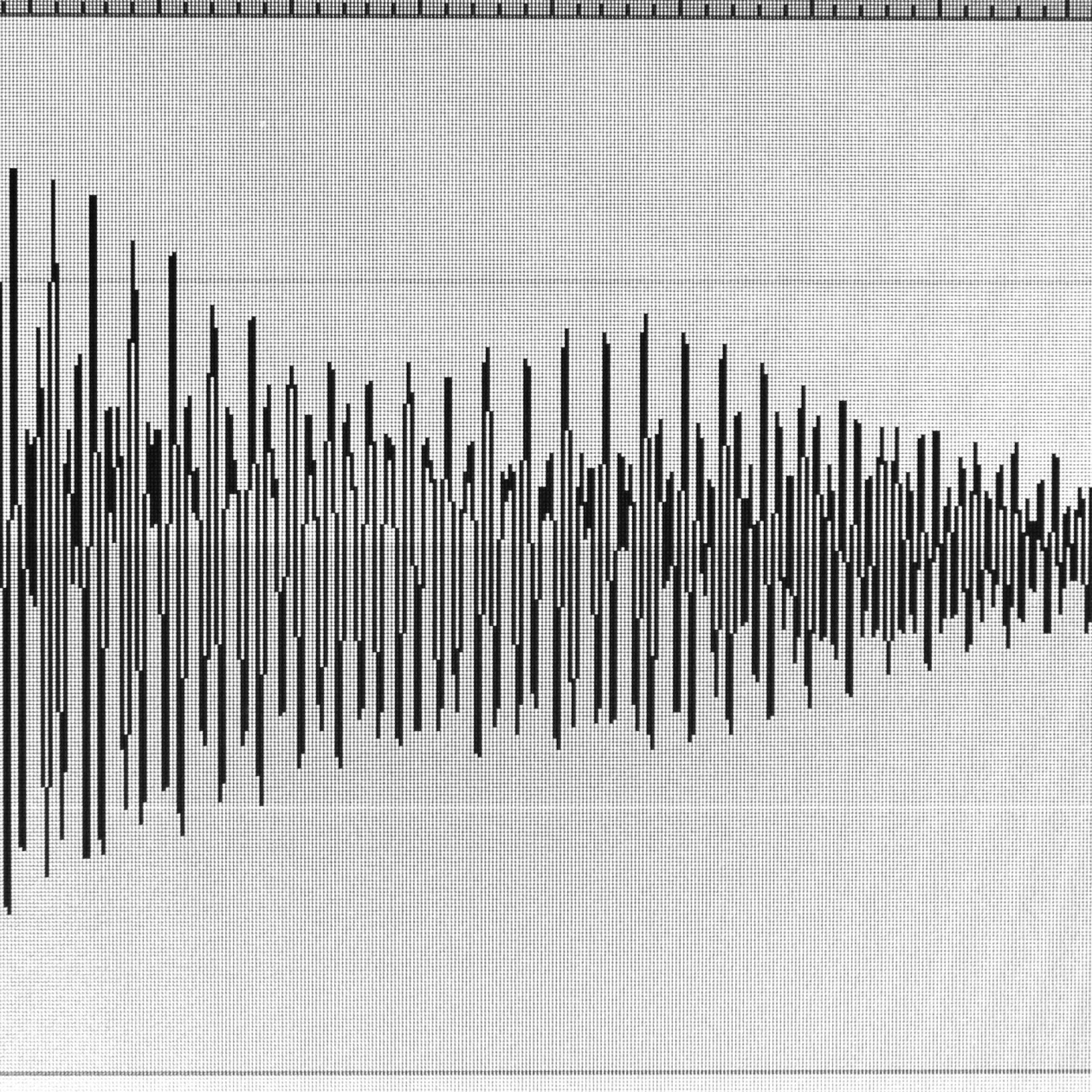
On The Bench: Compressors Part 2
If feedback is something you more readily associate with an out-of-control foldback wedge than an in-control compressor, read on – the results are sure to be… electroluminescent.
The Side-Chain
Text: Rob Squire
In the previous installment of On The Bench (Issue 66) we looked at the many and various types of compression, and in particular, the audio path through a compressor and the various mechanisms employed to alter the gain within it. This issue, I thought we might return to the topic and discuss exactly how the control signal of a compressor – often referred to as the side-chain – is internally derived, and how this signal changes gain in a useful, ‘compressorly’ like manner. After all, ultimately it’s this control signal that facilitates the implementation of threshold, attack and release settings.
NO CONTROL
But before we examine the myriad control possibilities of a compressor, let’s pause for a moment and consider how many controls such a device can successfully live without. The LA-2A, for example, is perhaps one of the most successful (and highly prized) compressor/limiter designs of all time, yet it has only two controls… well three, if you include the limit/compress switch, which, in many situations, appears to do nothing at all.
The first of these, the ‘Gain’ control, in reality, is nothing more than an output level control. It doesn’t directly affect the operation of the limiter at all (despite the impressive size of the knob), serving only as a trim control for the final output level. It certainly makes up for any level lost by the action of the compressor, but strictly speaking, it has nothing to do with the compression circuit itself.
The only control on an LA-2A that does directly affect limiting of the audio signal is the ‘Gain Reduction’ pot, which, when turned clockwise, lowers the threshold of the compressor. It’s made up of a simple level control which takes a split of the audio signal after the opto cell and feeds it, via an additional amplifier, into the electroluminescent panel. This, in turn, illuminates the opto cell. The electroluminescent panel itself has a characteristic whereby it only begins to glow above a certain amplitude – possessing its own threshold of operation, as it were. When an audio signal exceeds this threshold, the panel begins to glow, growing brighter and brighter as the incoming signal level continues to increase. As discussed back in Issue 66, the whole attack and release characteristic of an LA-2A is then determined by how the opto cell reacts to this light source. The opto cell is the actual component responsible for providing the gain reduction, while the electroluminescent panel is the component that determines the unit’s threshold of operation.

FEED-BACK & FEED-FORWARD
A compressor’s side-chain signal can be derived from one of two points along the audio path, and this choice is fundamental to its operation and control possibilities. Returning to the examination of the LA-2A for a moment, as previously mentioned, the audio signal to be sent through the side-chain of this device is picked up “after the opto cell.” Thus, the origin of the control signal, which will ultimately control the gain reduction device, is taken from a point in the circuit that follows after the gain reduction device. This is known as feed-back compression (see Fig. 1).
Being essentially self-correcting in nature, feed-back compression significantly eases the design requirements of the side-chain. Since the source of the control signal follows after the gain reduction device, it can effectively ‘see’ the results of any applied compression and adjust itself accordingly. If too little or too much gain reduction occurs under a particular setting, the signal entering the side-chain will be correspondingly larger or smaller, thus forcing the gain reduction to correct itself. Well-known examples of feed-back compressors are the aforementioned LA-2A, the UREI 1176LN, the SSL bus compressor (commonly mistaken for a feed-forward device) and the ELI Distressor.
Feed-forward compression, on the other hand, derives its side-chain control signal before the gain reduction circuit. As a result, unlike feed-back compression, the side-chain in a feed-forward device can’t ‘see’ the results of the process it’s applying, requiring instead a more sophisticated and precise circuit to achieve an effective and repeatable result.
Most feed-forward compressors typically use an RMS/log converter as part of the side-chain processing. These devices generate an accurate DC signal or control voltage that’s proportional to the average decibel level of the incoming audio. The RMS detector component measures the power (or energy) in the signal rather than the instantaneous signal level. Similar to the workings of a VU meter, the detector closely mirrors the way we actually hear sound and interpret loudness, whereby a sustained low-frequency signal of a lower peak level (a bass guitar perhaps) can sound louder than the transient signal of, say, a snare drum, which possesses a much higher peak level. The log conversion scales the control signal, enabling a wide range of audio signals to be accurately represented. This scaling to a logarithm of the audio signal marries perfectly with the exponential control voltage required by modern VCAs, allowing accurate and precisely controlled compression. Examples of feed-forward compressors are the SSL channel compressors and virtually all dbx compressors.
Feed-forward compressors are often characterised by their front panel controls reflecting this precision, with attack and release times spelt out in exact milliseconds and seconds. Feed-back compressors meanwhile are often more ‘rubbery’ in their control accuracy and often exhibit a degree of ‘interaction’ between the side-chain controls. So, for instance, when a Release setting is altered, it might have an inadvertent effect on the Threshold setting and so forth.
CONTROL FREAK
It’s easy to get carried away with all the control possibilities of a compressor, and I should know. Currently languishing on my ‘ideas’ shelf is a prototype compressor that has more controls on it than a jet fighter. Yet, ironically, every time I look at it I’m reminded of one of my favourite compressors of the 1980s: a dbx 163 half-rack unit with just one solitary control, a horizontal slider labelled ‘More’. Pushing that slider to the right routinely produced exactly what you might expect: further to the right, more compression.
Be that as it may, let’s chip through the various control possibilities and see what’s what.


DETECT, ATTACK & RELEASE
The side-chain of any compressor performs just like a military exercise; ‘Detect, attack and release’ is the mantra here. The results can range anywhere from ‘calm and smooth’ (unlike most military exercises) to ‘aggressive and powerful’.
The core component of the side-chain is its detector circuit, which converts the audio signal to DC, which represents the overall amplitude of the audio. This can be as simple as a pair of diodes (á la an UA 1176), a precision DC rectifier (as per the SSL bus compressor) or a complex RMS logarithmic converter like the one found in a dbx 160. Whichever approach is taken, the result is a changing DC signal that represents the instantaneous envelope of the audio (see Fig. 2).
This signal must then be ‘smoothed out’ before the final control signal is sent to the gain device. This is where attack and release parameters come into play, forming as they do the time constants of the smoothing process. The Attack time establishes the speed by which the control signal responds to an increase in the audio signal, while the Release parameter affects how quickly the control signal responds to a decrease in the audio signal, effectively smoothing out the rectified audio.
Like a detector circuit, an attack/release circuit can be complex or simple, and comprised of as little as a pair of variable resistors (pots) and a single capacitor. In many compressors, this is the extent of the circuitry for these controls (see Fig. 3). Additional capacitors and resistors can be added to the circuit to yield program-dependent time constants whereby the release time of transient audio (a snare drum, for example) can be faster than denser, sustained sounds (like vocals). These can be enabled as a separate release setting – as in the ‘Auto’ setting on an SSL bus compressor – or integrated as a part of the overall design, such as in an 1176. Now I know this last statement may come as a surprise to many; the 1176 is not commonly perceived as having program-dependent attack and release faculties, but it does. At all but the slowest attack setting, the UREI 1176 exhibits program-dependent timing. Being intrinsically ‘Auto’ in nature is just one of things that contributes to the sonics of 1176 compression.
One curious side effect of the timing of a side-chain is the effect it has on distortion. At very short release times there’s less smoothing of the control signal, which allows some of the rectified peaks in the waveform to carry through to the gain reduction device. All the synthesis guys out there would already know that this form of amplitude modulation is one sure-fire way of creating a complex waveform from a simple one. In the case of a compressor with a short release time, frequency-dependent harmonics are created, with higher levels of harmonics on the lower frequencies.
The side-chain of any compressor performs just like a military exercise; detect, attack and release.


RATIO
Of course, compression is all about altering dynamics, and it’s the Ratio control of a compressor that specifies the amount of gain reduction applied above the threshold point. The higher this ratio, the greater the amount of gain reduction. At a ratio of 1:1, it doesn’t matter where the Threshold, Attack and Release controls are set – no gain reduction will occur. At the other end of the spectrum, however, a ‘limiter’ ideally aims to achieve a ratio of infinity:1 – whereby no increase in level is possible above the threshold setting. But in the real world of electronics, most so-called ‘limiters’ are, at best, working at a ratio of about 20:1. This expression – 20:1 – tells us that a 20dB increase in input level above the threshold point will cause a 1dB increase in output level (see Fig. 4).
As you can see from Fig 4, with the threshold of a compressor set at 0dB, any input signal level below this point will travel through unaltered (at 1:1). Above this threshold, compression occurs at whatever ratio is set by the ratio control (shown by the coloured lines).
Another little-known fact about limiting devices such as these is that it’s possible to go beyond infinite compression [sounds like an audio sci-fi – Ed.] to a point where any input source exceeding the threshold is actually turned down (attenuated) relative to the input signal – strange yet true. The infamous Eventide Clockworks Omnipressor and some dbx compressor designs are examples of devices that allowed for this extreme form of compression… or perhaps they’re more accurately described as effects processors.
In the case of this type of control, the ratio is expressed using a negative number, such as –2:1, since once an input signal exceeds the threshold, any increase in the input signal will cause the output signal to decrease. This creates a strange sonic effect where often the harmonic content of the signal is telling our brain that a sound is getting louder while it’s actually growing quieter.
KNEE TO KNOW
The transition around a threshold inside a compressor is traditionally referred to as the ‘Knee’. For those unsure of where this term comes from, Fig. 5 should shed some light on it. Achieving a truly hard knee is a tricky thing to achieve electronically and only feed-forward VCA-based compressors manage to pull it off well.
The knee characteristics of any compressor significantly contribute to the sonic footprint of the device. For example, and returning to the LA-2A again, the knee of this deceptively simple compressor/limiter is complex, highly program-dependent and varies with both frequency and level. There’s an undeniable musicality to a softer knee – dbx expresses this soft-kneed approach though a technique it has famously labelled “Over Easy” compression, where around the threshold point the ratio gradually increases from an initially low value of around 1.5:1 to a harder ratio of, say, 10:1, as the input level continues to increase.
NOT ALL SIDE-CHAINS ARE CREATED EQ-UAL
So far in this discussion we’ve acted on the assumption that all frequencies are dealt with equally in the side-chain; i.e., that the side-chain exhibits a flat frequency response. One extreme deviation from this, however, is a de-esser, which is really just a compressor with a strongly emphasised high-frequency response in the side-chain. By tuning the frequency of this peak or shelving filter EQ in the side-chain into undesired frequencies in the audio signal, the threshold of a compressor is effectively lowered at these frequencies, forcing the unit into compression with much greater sensitivity when they strike. Nevertheless, when an analogue de-esser is de-essing it’s reducing the level of the entire audio signal, not just the targeted frequencies. And as many of us have discovered along the way, the difference between the settings of a nicely de-essed audio signal and a dull, over-compressed one can be subtle.
Some compressors even allow access to the side-chain signal explicitly for external processing by an external EQ. API came up with a nifty control for its 2500 compressor called ‘Thrust’ – a high-pass filter with a 3dB per-octave slope. This de-emphasises the low frequencies in the side-chain, reducing the compressor’s sensitivity and resulting in the compressed audio being less affected at the bass end of the audio spectrum. This simple equalisation of the side-chain reduces pumping at high levels of compression and increases the apparent level of bass.
Side-chains range from high precision topologies that have much in common with analogue computing circuits, to the deceptive simplicity of the natural interplay of the electroluminescent panel and opto cells of the LA-2A. Whether a compressor has one knob or 10, there’s always a lot going on in there!

















RESPONSES